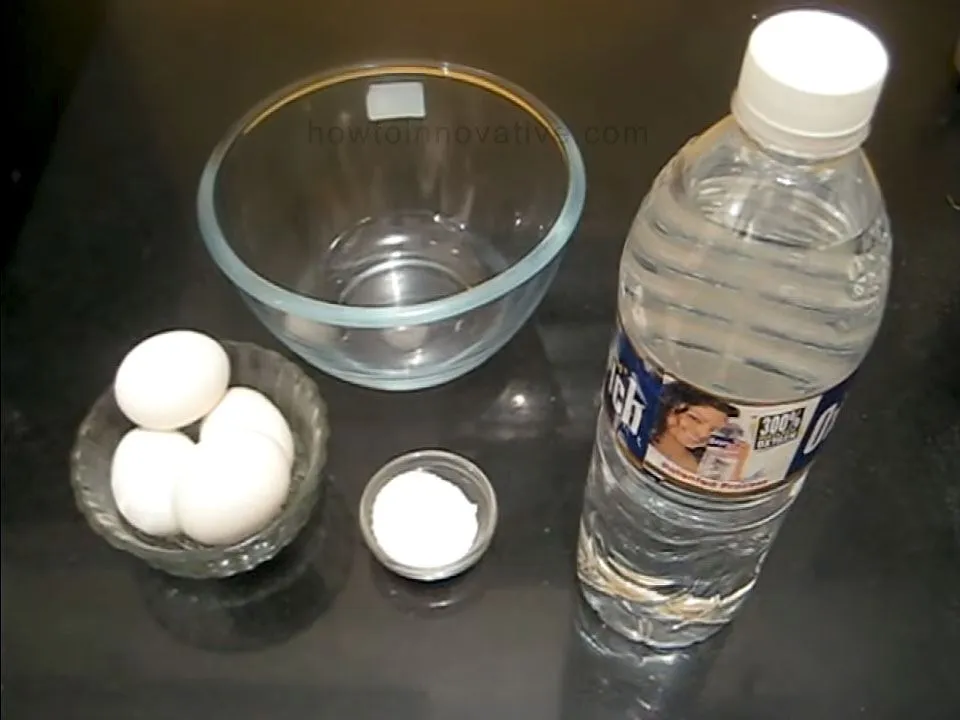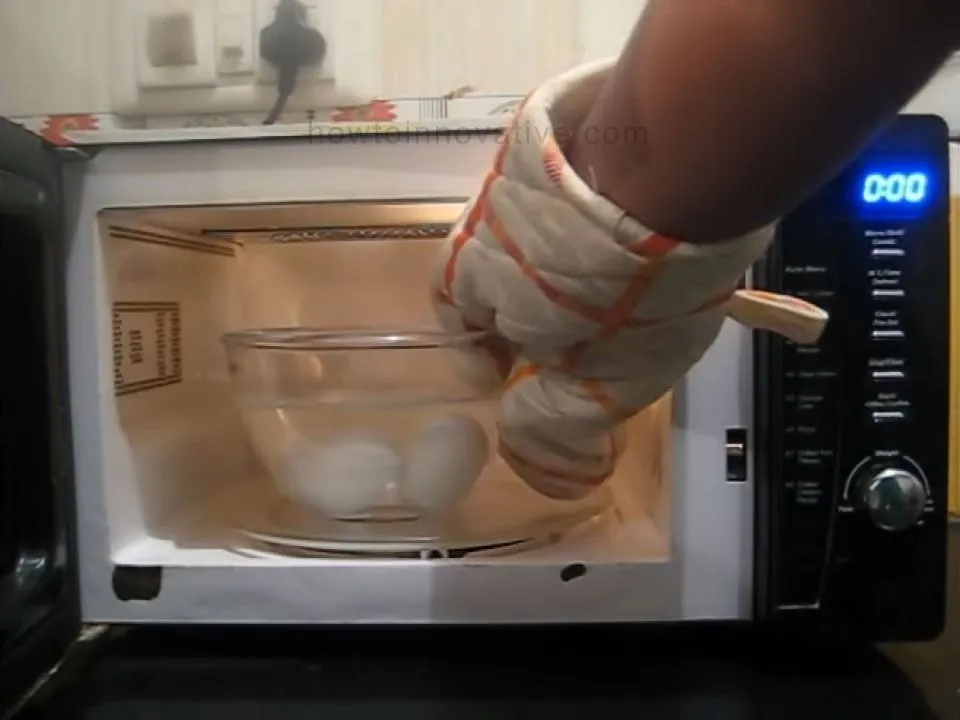Boiling eggs might seem like a simple task, but doing it in the microwave requires a bit of know-how to avoid any eggsplosive situations or messy mishaps. In this guide, we’ll walk through a step-by-step process that anyone can follow to boil eggs in the microwave safely.
Table of Contents
Boiling eggs in the microwave can be a convenient and quick way to prepare a nutritious meal or snack.
Safety First
Before we start, remember that microwaving eggs can be tricky. If not done correctly, eggs can explode due to the rapid build-up of steam inside the shell. So, let’s make sure we do this safely and mess-free!
Materials Needed:
- Eggs
- A microwave-safe bowl or container
- A safety pin or sharp object to pierce the eggs
- Paper towel or microwave-safe cover
- Cold water
- Salt (optional)
- Slotted spoon
- A microwave oven

Step-by-Step Process: How To Boil Eggs in the Microwave Safely
Step 1: Choose the Right Container for Microwave
Select a microwave-safe bowl that’s large enough to fully submerge the eggs in water. Glass or ceramic bowls work best. Avoid metal at all costs, as it’s a no-go in microwaves.

Step 2: Preparing the Eggs
Take your cold eggs straight from the fridge. Start by selecting the desired number of eggs you want to boil. It’s essential to use fresh eggs for the best results.
Step 3: Pierce Eggs Before Boiling
Using a fork or an egg piercer, carefully pierce each egg at the larger end. This step is crucial as it prevents the eggs from exploding in the microwave due to steam buildup. Make sure to pierce through the shell and membrane gently.

Step 4: Place Eggs in a Microwave-Safe Bowl
Next, place the eggs into a microwave-safe bowl or container. Ensure that the container is large enough to hold all the eggs you intend to boil comfortably.
If you’re cooking multiple eggs, make sure they’re not touching each other for even cooking. It’s essential to leave some space at the top to prevent spillage during cooking.
Step 5: Add Water
Pour enough cold water into the bowl to cover the eggs completely. The water should submerge the eggs by at least an inch. This helps distribute the heat evenly and prevents the eggs from bursting. Adding a pinch of salt to the water is optional and can help prevent the eggs from cracking further.



Step 6: Cover the Bowl (optional)
Cover the bowl with a microwave-safe cover or a paper towel. This helps to trap steam inside the bowl, allowing the eggs to boil evenly and prevent any splattering in the microwave.

Step 7: Microwave the Eggs with Care
Place the covered bowl with the eggs in the microwave. Set your microwave to medium power (50-70%) and cook for 6-9 minutes, depending on your microwave’s wattage and how well-done you like your eggs. If your microwave doesn’t have power settings, cook in 1-minute intervals, checking after each minute.
For soft-boiled eggs, microwave for about 4-5 minutes. For hard-boiled eggs, microwave for 7-8 minutes. Cooking times may vary depending on your microwave’s wattage, so adjust accordingly.



Step 8: Let Them Rest
Once the cooking time is up, let the eggs sit in the microwave for a minute or two. This allows for residual cooking and prevents you from burning your fingers.

Step 9: Check for Doneness
After one minute’s rest, carefully remove the bowl from the microwave using oven mitts or a kitchen towel, as it will be hot. Uncover the bowl and check the eggs for doneness. They should be firm to the touch and fully cooked.

Step 10: Cool Boiled Eggs Before Peeling
Allow the boiled eggs to cool for a few minutes before handling them. Use a slotted spoon to carefully remove the eggs from the hot water and place them into a bowl of cold water. This stops the cooking process and makes peeling easier.



Step 11: Peel and Enjoy
Once the eggs have cooled sufficiently, peel off the shells under cool running water. Gently tap each egg on a hard surface to crack the shell, then peel it off carefully. Enjoy your freshly boiled eggs as a snack, salad topping, or in your favorite recipe!



Safety Tips:
- Always pierce the eggs before microwaving to prevent explosions.
- Do not microwave eggs without water, as this will almost certainly lead to them bursting.
- Be cautious when handling hot water and eggs from the microwave.
Conclusion
Microwaving eggs is a quick and convenient method, especially when you’re short on time. Just follow these steps, and you’ll have a protein-packed snack or addition to your meal in no time. Experiment with different cooking times to achieve your preferred level of doneness. Remember, practice makes perfect, so don’t worry if it takes a few tries to get it right. If you found this article useful, enjoy other guides.







